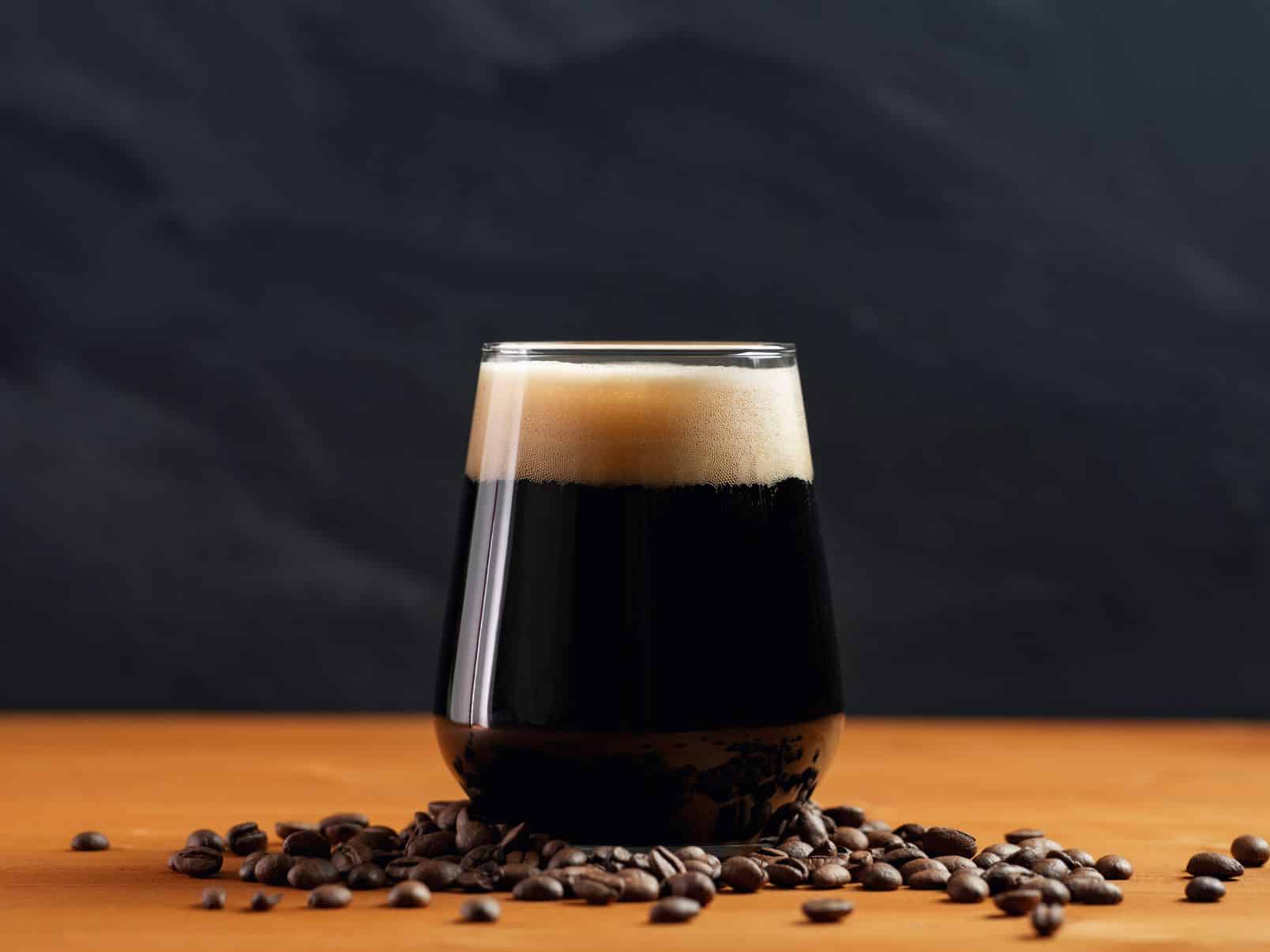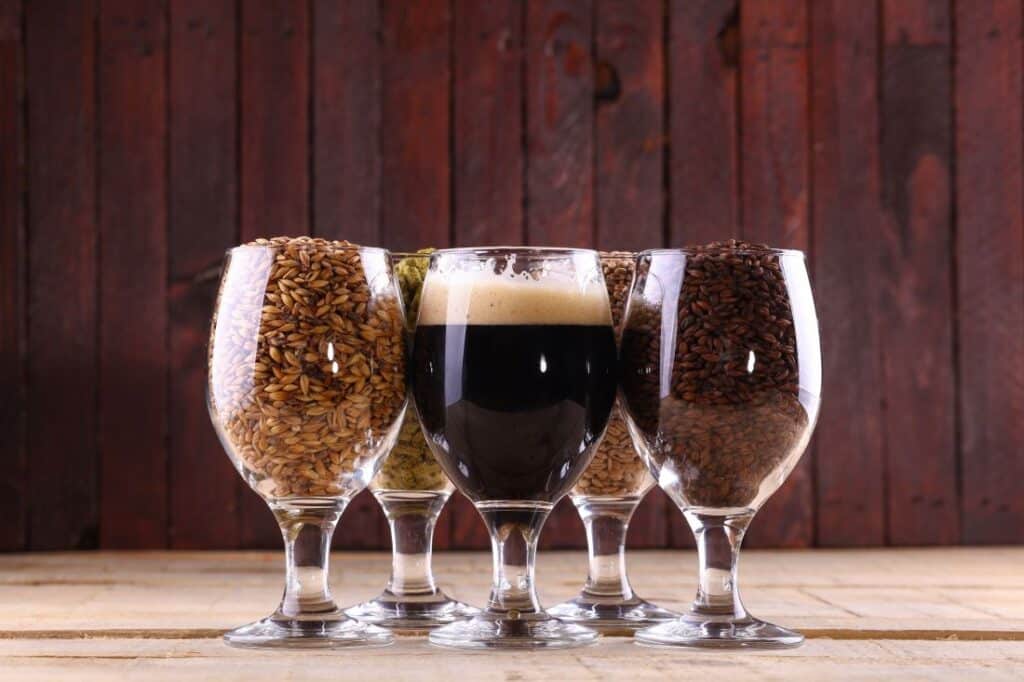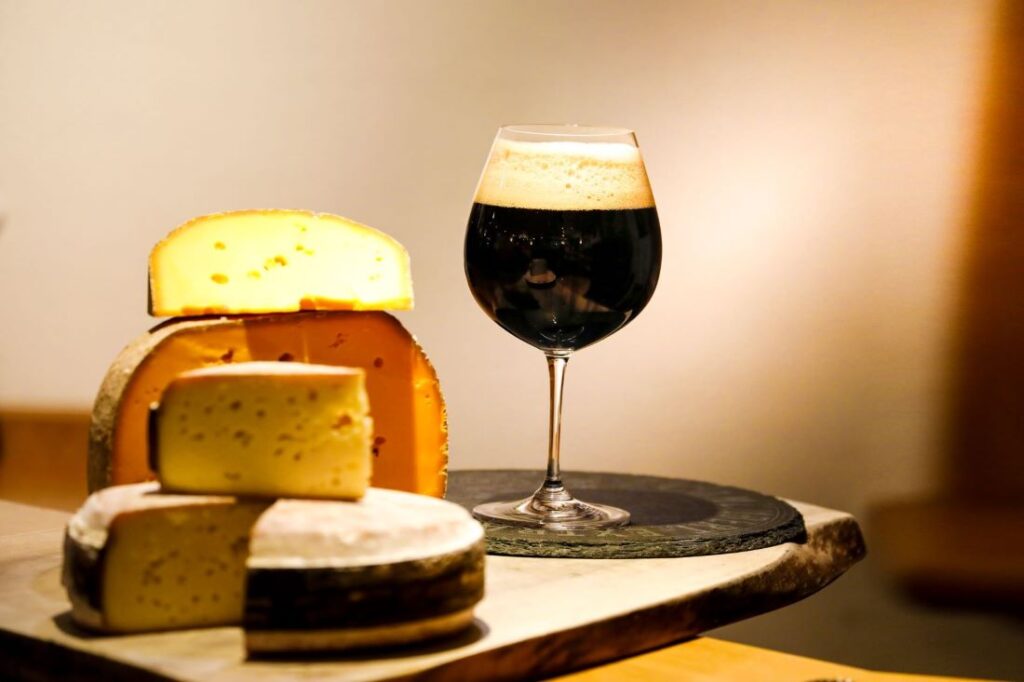
You never forget your first time. Mine was with my flatmate, an Irish student, during my
University time in Italy. The first night he moved in the apartment, my buddy suddenly left home
few minutes before our dinner was ready. He came back timely,
dragging a bag containing a few cans of Irish stout.
That was love at first sip. Smooth and tasty, aroma of coffee and
chocolate. It tasted to me as if I was drinking a full meal itself.
I just cannot forget the taste of that craft beer.
Since then, stouts have been on my top list of preferred craft beers to order at any beer bar and Irish pub.

Years later, I repeatedly shared this enjoyable stout experience with friends in local pubs, during my long stay in Scotland.
It was so funny for me to listen to my Irish and Scottish friends sharing stories and legends about this “black gold” beer.
For example, in the early 60’s, Irish doctors prescribed stouts to their patients having iron deficiency or even to pregnant women, assuming that the iron in this craft beer would “help.”. I could not believe it until I saw a friend of mine who was sipping a stout in her 7th month of pregnancy. Quite a shocking experience.
Thankfully, all this has changed with time, and I am glad to hear that these days, medical doctors in Ireland would rather enjoy a pint of stout at the local pub after work, rather than prescribing it to their patients.

Is Stout style English or Irish?
I have kept contact with many Irish friends, and I had great pleasure to visit the green Irish land, including Dublin, a wonderful city. Although, it is widely thought that stouts are originally Irish and Arthur Guinness is the inventor, actually, this is not the case.
Stout style came from England and derived from another artisanal beer style, less known to the public “Porter“, a light black beer brewed in London, using an innovative process to roast the malts. It is indeed because of the roasted malts that this beer is black in color. English exported large amounts of porter, until mid-1700 when Guiness started to brew and sell it in Ireland.
Classic ormodern: traditional or craft beer for every taste
Irish classic stouts are dry and very smooth, mainly because a portion of nitrogen gas is added to the beer, creating a creamy foamy top. “Imperial” stouts are also brewed in Ireland and were originally exported to Russia. Other less famous stouts are the “Baltic“, originally from East Europe and generally sweeter and with a caramel hint.
Brewers might add other ingredients to their stout artisanal beers: e.g., coconut, beans of chocolate or coffee, brewed coffee or chocolate bars. Unfortunately, to my taste the results are often rather poor, and you might wonder if it would be better to have a good coffee or chocolate instead.
I know some brewers adding lactose while brewing their craft beer. The resulting beer is named milky stout. Lactose imparts creaminess and consistency to this craft beer style. Since I have some troubles to digest lactose, I always ask to the barman if their stout on tap contains it. If you also have lactose digestion problems or intolerance, always ask this question to the barman, before wondering why you feel sick, despite not having consumed any cheese or milk.
My personal preference is for dry stouts. When I arrived here in Switzerland, my German language skills were pretty low, and at the local bars I used to ask for a black craft beer, using the term “Schwarzbier“. It made perfectly sense to me thinking that together with the black forest “Schwarzwald” and the “Schwarztorte”, there would have also been a Schwarzbier. And indeed, this is the case, but the Schwarzbier is completely different from the one I was looking for. “Dunkle Bier” literally translating into dark beer in English, is the right name for a stout here in the German speaking Switzerland.
Inspired by the Irish stlye, we at Fermento brew Liberica,. our classic craft stout using 4 roasted malts imparting the classic black color and a very pleasant aroma of coffee and bouquet of chocolate. The selection of hops is to reach just the right level of bitterness. We use malts and hops in a balanced manner to allow that every single beer ingredient comes out from the stout. Only in this way, this craft beer can be paired with great food.

dry, smooth, mild in flavor and with great creaminess
strong, roasted flavors that decrease with age
creamy and roasty with lactose
bitter sweet, caramel notes
Well-made burgers and steaks are worth a great craft stout. I love the classic Irish pairing of cheddar cheese and crackers. British cheddar is great and the aged one is just perfect with a rich-flavoured stout.
Oysters and stout are also a must. I had this experience in Dublin, and it was just amazing. If you try this pairing at home, just make sure you get the freshest oysters and a smooth not too roasted craft beer.
I have combined our Fermento Craft stout Liberica with cheese, chocolate and made a dessert with it.
Liberica has a pronounced roasted coffee and chocolate aroma and we paired it with Mimolette, a French orange cheese produced on the French coast facing Britain. I assume that the cheese culture somehow mixed between the two countries in this area. When the Fermento stout is enjoyed together with soft cheeses such as Le Moelleux du Revard or Reblochon, the feeling is to drink a cappuccino, where the coffee aromas of the craft beer well mixes with the milk creaminess of the cheese.


Fermento are Swiss craft beers and for me pairing the Liberica stout with chocolate came just natural. White chocolate, pure or with vanilla is the best pairing, but also milk chocolate is a valid match. Dark chocolate may result too bitter with this craft beer. Generally, I find that stouts pair very well with chocolate cakes.
My favorite is Tiramisu. You can drink stouts together with the Tiramisu’ classico. Alternatively, you can make the Birramisu by using the stout as one of the ingredients. The biscuits shall be soaked in a mix of coffee and beer, before adding the mascarpone and egg cream.
If you want to fall in love again, or for the first time, either find a great Irish friend who introduces you to the stout world, or just go ahead, now you have all you need to get the best stout experience. Let me know what you think about this article and your experience with artisanal beers and stouts